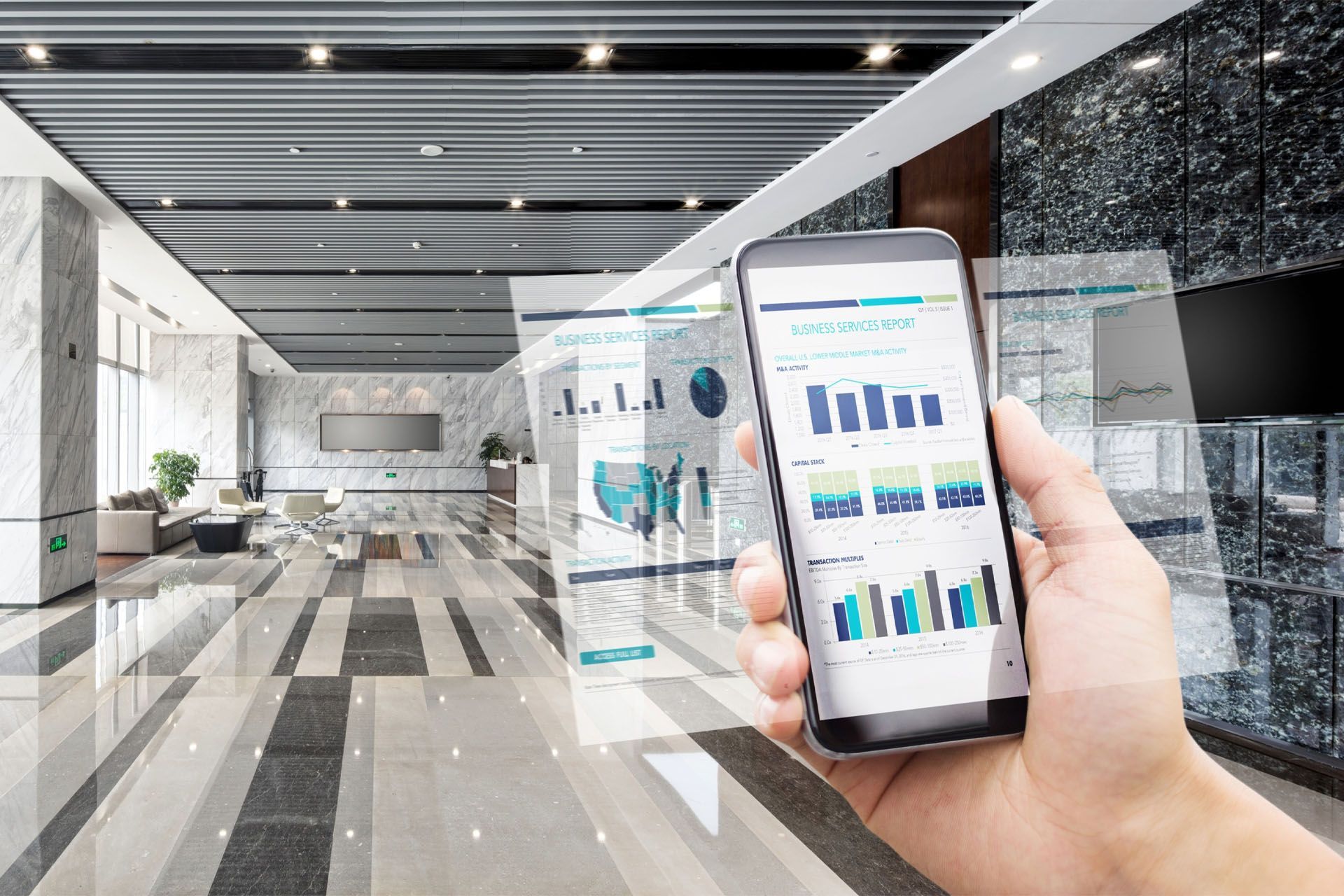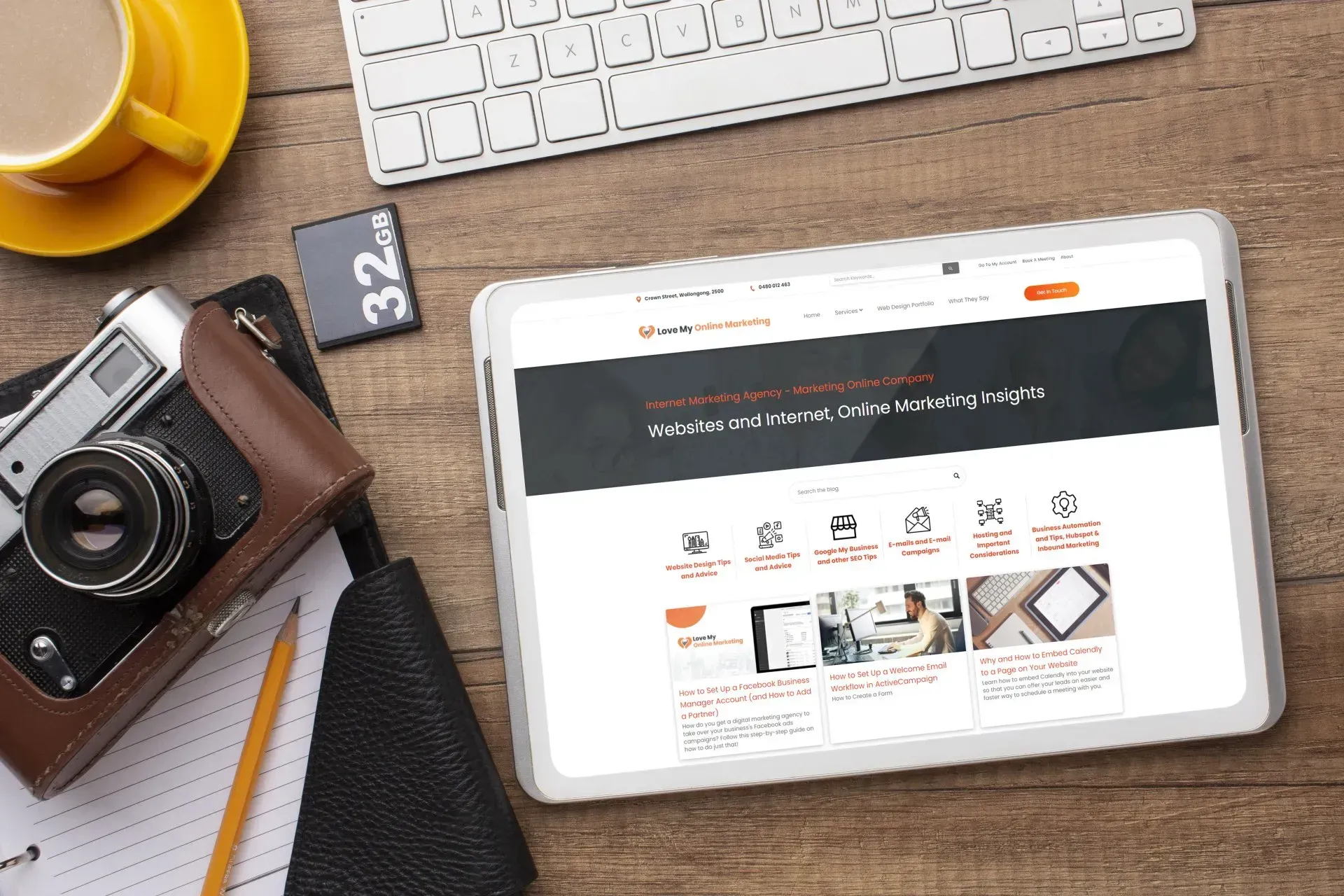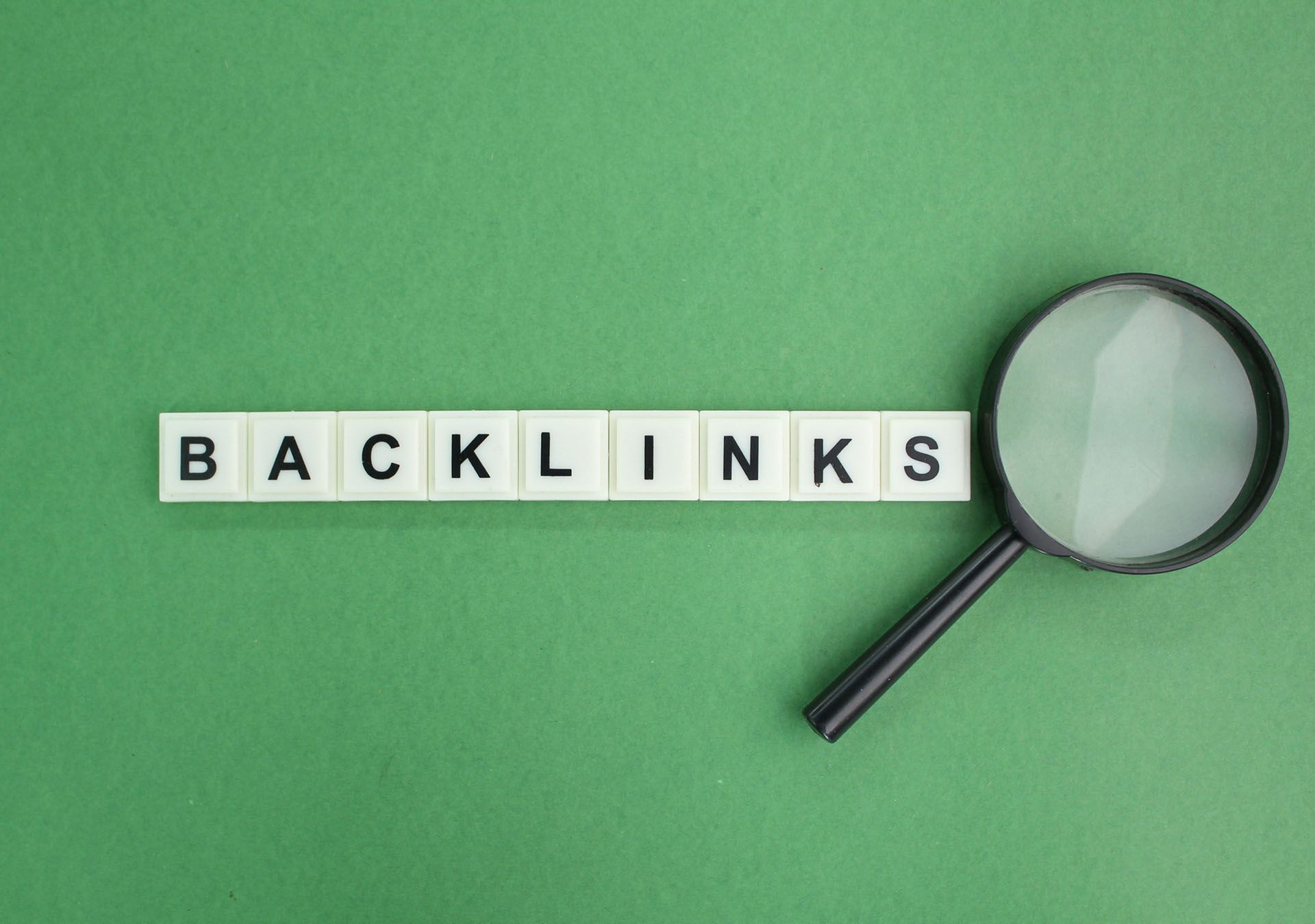Crown Street, Wollongong, 2500
The Impact of Microinteractions in Modern Web Design
Looking to make your digital interface more intuitive and engaging? Microinteractions can improve overall user experience by adding subtle yet impactful elements to your web design. These interactions go beyond aesthetics, but they create a dynamic and responsive environment that intuitively guides users through your digital space.
In this blog, we'll delve deeper into what microinteractions are, their role in web design, and the right way to integrate them. Whether it's guiding users through seamless interactions or providing instant feedback, microinteractions play a crucial role in shaping the perception and usability of your digital product.
What are Microinteractions?
Microinteractions are subtle animations that are designed to bring life to a user interface. Although small, these carefully crafted animations serve a functional purpose by responding to user actions, such as clicks, hovers, or scrolls, in a visually engaging way.
Microinteractions can be as simple as a button changing color when clicked, a sound notification when a message is received, or a slight vibration when an action is performed on a mobile device. They play a significant role in enhancing the overall user experience by adding a layer of responsiveness and visual feedback to user actions, making user interactions more engaging and intuitive.
What are the four components of microinteractions?
Microinteractions typically consist of four key components:
Trigger
The trigger is the initiation point of the micro interaction. It is where the user's action or input is activated. It could be a click, hover, swipe, or any other specific gesture that prompts the micro interaction to begin. There are two primary types of triggers associated with microinteractions:

1. User-initiated trigger
User-initiated triggers are directly influenced by the user's interactions with the interface. These triggers are activated by explicit actions or inputs from the user such as clicking a button, hovering over an element, swiping on a touchscreen, or pressing a key.
2. System-initiated trigger
System-initiated triggers are initiated automatically by the system or application based on certain conditions or events. They are not directly prompted by user input but are instead a response to changes in the system or environment such as receiving a new message notification or an automatic update to a live feed.
Rules
Rules are a set of conditions that define what happens when the micro interaction is triggered. They establish how the system responds to user action, determining the specific outcome or change in the interface. They also set limits on user actions and offer helpful hints when users encounter these limits. For instance, an error message may appear if a password lacks special characters.
Feedback
Feedback is the visible, audible, or tactile response that the system provides to the user after the micro interaction is triggered. It communicates the result of the user's action and helps create a responsive and seamless user experience. It can take a range of different forms such as changes in colour or shape, progress indicators, or auditory cues like sound effects.
Loops and Modes
Loops and modes define the micro interactions that shape the temporal aspects of user engagement. Loops are continuous interactions, such as a loading spinner that rotates until a task is completed. They basically dictate the duration of a micro interaction, whether it repeats, and the evolution of its characteristics over time. Modes, on the other hand, represent different states of a micro interaction, such as an on/off toggle switch that toggles between two states.
What are the different types of microinteractions?
Microinteractions come in various types, each serving a specific purpose in enhancing user experience. Here are different categories of microinteractions:

Click and Tap
Clicking is a user interaction performed using a mouse or a similar pointing device on desktop computers. When a user clicks and releases the mouse button, it registers as a click which activates buttons, links, or other interactive elements. On the other hand, tapping is performed using a finger on touch-enabled devices such as smartphones and tablets. When a user touches the screen and quickly releases their finger, it registers as a tap.
Scrollbar
The scrollbar refers to the visual and interactive element that allows users to navigate through content in a scrollable area, such as a webpage, document, or application. It operates through actions like dragging, clicking on the track, or using touch gestures to scroll vertically.
Microinteractions associated with the scrollbar include hover effects, smooth scrolling transitions, scrollbar fade-in/fade-out based on user activity, and scroll indicators that show the user's position within the content. These subtle design elements contribute to the overall usability of a digital interface, providing visual feedback and cues to enhance the user experience during content navigation.
Pull to Refresh Animation
Pull-to-refresh animation is a user interface design pattern that is commonly used in mobile applications. This design animation allows users to manually refresh content by pulling down on a touchscreen or dragging the content area with their finger. This interaction is often used in apps that display dynamic content, such as social media feeds, email lists, or news articles.
Swipe Effect
Swipe effect in microinteractions involves a user's horizontal gesture, typically performed on touch-enabled devices, to navigate through content or trigger specific actions. Users can swipe left or right to move between pages, images, or sections within an interface. This gesture often triggers animations, transitions, or changes in content, providing a dynamic and engaging experience. Commonly used in mobile apps, the swipe effect allows users to intuitively interact with and explore content by a simple swipe gesture.
Progress Bars
A progress bar is a visual indicator that conveys the status of an ongoing process or the completion of a task. Typically appearing as a horizontal bar that fills gradually, the progress bar offers real-time visual feedback to users, informing them about the advancement of an operation such as file downloads, form submissions, or application installations. This micro interaction displays how much progress has the user made toward achieving a particular goal.
Call-to-Action Buttons
Call-to-action buttons are widely used in web design to direct attention, encourage engagement, prompt user interaction, and ultimately contribute to increased conversion rates and business success. Whether encouraging a purchase, prompting a download, or soliciting sign-ups, these buttons serve as navigational cues that play a pivotal role in directing user behavior. Through compelling design and strategically placed calls to action buttons, websites can effectively influence visitor decisions, fostering increased conversions and achieving predefined goals.
Digital Alarm
Digital alarms refers to a user interface element that incorporates visual and auditory cues to notify users of specific time-related events or alarms. This can include countdowns, reminders, or scheduled tasks within a digital application or device. Digital alarms often employ animations, such as a ticking clock or a countdown timer, paired with sound effects or alarms to grab the user's attention. This combination of visual and auditory elements are effective at informing users about important events or deadlines within a digital environment.
Notification Bell
The notification serves as a visual indicator of incoming notifications or alerts. Typically represented by an icon resembling a bell, it notifies users of new messages, updates, or events within a digital platform. When there are unread notifications, the bell may display a badge or change its appearance, signaling users to check for updates. Upon interaction, such as clicking on the bell icon, users can access a notification center or see a brief preview of recent alerts.
Why are microinteractions important in web design?
Microinteractions significantly enhance the overall UX by making digital interfaces more engaging and intuitive. Here are key ways in which microinteractions play a significant role in modern web design:
User Engagement and Delight
Microinteractions add a layer of interactivity that capture users' attention and encourage engagement. Whether it's a subtle animation on a button or a responsive hover effect, these small details contribute to a positive emotional connection with the website, making each user experience more enjoyable.

Feedback and Guidance
Microinteractions provide immediate feedback to users to demonstrate that their actions have been recognised and processed. This feedback is crucial for guiding users through a website, helping them understand the system's response to their interactions.
Usability and Intuitiveness
Microinteractions improve usability by simplifying complex interactions, reducing cognitive load, and providing clear feedback. Moreover, well-designed microinteractions assist users in navigating the user interface by visually indicating interactive elements, transitions between states, or providing hints about functionality.
Communication of System Status
Microinteractions help manage user expectations and reduce uncertainty by conveying important information about the system's status. This may be seen through a loading spinner indicating ongoing processes or a checkmark confirming a completed action.
Brand Differentiation
Unique and well-designed microinteractions can set a website apart from others, contributing to brand identity and recognition. Consistent and distinctive microinteractions create a memorable and cohesive user experience.
How do you implement micro interactions in web design?
To implement micro interactions in web design, follow these steps:
Identify Interaction Points and Define Purpose
Identify key areas where micro interactions can enhance user experience. This could include buttons, navigation elements, form fields, or any other interactive elements on your website. Clearly define the purpose of each microinteraction. Determine what action triggers it and what feedback users should receive.
Keep it Subtle
While microinteractions are designed to be engaging, they should be kept subtle to maintain a user-focused and efficient digital experience. This prevents unnecessary distractions, allowing users to stay engaged with their primary tasks without disruption. It reduces cognitive load and ensures a more accessible interface for users with varying needs. Furthermore, subtle microinteractions contribute to a professional and polished aesthetic that aligns with a brand's identity.
Make them Responsive
Incorporate visual cues like animations, color changes, or icon transformations to make your microinteractions more engaging and intuitive. More importantly, your microinteractions should be designed with the user in mind. Ensure they are responsive and work seamlessly across various devices and screen sizes. By applying the responsive web design principles, microinteractions can provide a consistent and enjoyable experience for users.
Stay Consistent
Be consistent with using micro interactions throughout your website. As we know, consistency is what establishes a seamless and unified user experience. When users encounter familiar micro interactions across different sections of your site, it creates a sense of predictability and ease of navigation. This not only reinforces the overall design language but also cultivates user trust, as they become accustomed to the behavior of these subtle yet impactful elements.
Accessibility Considerations
Keep accessibility in mind by ensuring that microinteractions are perceivable and understandable by users with different abilities. Provide alternative means of interaction or information for those who may not experience the visual or auditory cues. If possible incorporate features such as text descriptions, keyboard shortcuts, or haptic feedback to cater to a diverse user base. This ensures that everyone, regardless of their abilities, can fully engage with and benefit from the micro interactions.
Test and Iterate
During the user testing phase, microinteractions are tested to make sure they align seamlessly with user expectations and behaviors. This crucial phase allows designers to observe how users interact with these subtle elements in a real-world context. By assessing user reactions and gathering feedback, designers can identify potential issues, preferences, and areas for improvement.
Documentation
Document the implementation details of your microinteractions, including the triggers, visual feedback, and any specific design guidelines. This documentation can be valuable for collaboration among design and development teams.
Takeaway
As technology continues to evolve, adding microinteractions is essential to keep users engaged in what you have to offer. As discussed, these small but impactful design elements not only make websites visually appealing but also easy to navigate, accessible, and satisfying for users overall. That's why incorporating them should not just be considered a trend but a strategic necessity in today's web design.
At Love My Online Marketing, we are a talented web design team that stays at the forefront of design trends and technological advancements. Our attention to detail ensures that these subtle design elements align seamlessly with your brand identity so users can have a memorable experience while interacting with your digital interface. Whether you want to capture your audience's attention with interactive animations or want to streamline user journey with intuitive microinteractions, our team is here to translate your vision to life. Get in touch with us today.

Love My Online Marketing has 10+ Years of working alongside businesses and helping them grow. Discuss your options for online success from website Design and Development through to Google Marketing.
Do you want more traffic and business leads?
Love My Online Marketing is determined to make a business grow. Our only question is, will it be yours?






























